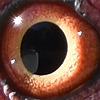HOME | DD
 TheBootesArtVoid — Fairy Wren Takes A Stand (Wild)
TheBootesArtVoid — Fairy Wren Takes A Stand (Wild)

#animal #animalphotography #animals #australia #australian #australiananimals #australianwildlife #bird #birds #natural #nature #naturephotography #photo #photography #photographyanimals #photographynature #photographyphoto #photos #wildlifeart #wildlifephotography #wren #wrens #birdphotography #wildlifereferencephoto #thebootesartvoid
Published: 2023-02-15 19:58:54 +0000 UTC; Views: 1121; Favourites: 135; Downloads: 0
Redirect to original
Description
Species Name: Superb Fairywren
Species Latin Name: Malurus cyaneus
Native To: South-Eastern Australia
Conservation Status: Least Concern
Photo Taken At: Werribee Zoo
Size (length): 14 - 16cm (5.5 - 6.3 inches)
Weight: 8 - 13g (0.3 - .5oz)
Lifespan: 5 - 6 Years
Population Trend: Stable
Diet: Carnivore, insectivore
Lifestyle: Arboreal, terrestrial, altricial, oviparous, territorial
Group Name: Herd, chime
Mating Behaviour: Polygynandry
Reproductive Season: Spring - late summer
Eggs Per Clutch: 3 - 4 eggs
Incubation Period: 14 days
Baby Name: Chick
Independent Age: 40 days
Sub Species Names:
Superb Fairywrens (Malurus cyaneus Cyaneus,
Malurus cyaneus Samueli, Malurus cyaneus Elizabethae,
Malurus cyaneus cyanochlamys,
Malurus cyaneus leggei,
Malurus cyaneus ashbyi)
Other Fairy-Wren Species:
Splendid Fairy-wrens (Malurus Splendens),
Purple-crowned Fairy-wren (Malurus coronatus),
Red-backed Fairy-wren (Malurus melanocephalus),
White-winged Fairy-wren (Malurus leucopterus),
Lovely Fairy-wren (Malurus amabiis),
Variegated fairy-wren (Malurus lamberti),
Purple-backed Fairywren (Malurus assimilis),
Blue-breasted Fairy-wren (Malurus pulcherrimus),
Red-winged Fairy-wren (Malurus elegans)
Description:
These tiny birds are sexually dimorphic which becomes more apparent during mating season. During mating season the males will go through a moulting period where they will sport a vibrant black and blue plumage along their chest, back, head, and face. The blue feathers will feature predominately along their cheeks, the top of their head, and the top of their back. The females will sport more of a neutral set of greys and browns for their plumage with white feathers on their chest. Darker brown feathers are seen along their back and head, light brown feathers will feature around their face and eyes. The males will have small black bills where as the females will have small brown bills. When mating season is over the males will once more go through a period of moulting where their plumage will resemble a more muted colouration more like the females. The juveniles will for a while resemble the females, juvenile males will also resemble females until they reach maturity where their bill darkens. During the first few mating seasons of a males life their bright blue plumage will appear incomplete and spotty in comparison to a fully fledged adult male.
Diet:
These tiny birds live primarily on small insects such as ants, grasshoppers, flies, and more. Typically these insects will be eaten from the ground but sometimes these birds will catch flying insects from the air or from bushes. These birds tend to forage in small communal groups. At times these birds may also feed on a small amount of seeds, flowers, fruit.
Behaviour:
These birds are socially monogamous but they have a polygynandrous (promiscuous) mating system. Pairs of the birds will pair for life but both the males and females will regularly mate with other individuals. The young are raised by the mother as well as the father and any of the other males who happened to mate with the mother before the young is born. Their nest is a dome-shaped structure of grasses and other fine material placed in a low bush constructed by the female. During the mating season the males will perform an exaggerated flight known as the 'sea horse flight' to attract a female mate. During this flight the male will extend his neck with his head feathers erect before descending slowly to the ground, at this point he will then spring back up rapidly beating his wings.
Further Reading (general information):
Wikipedia: en.wikipedia.org/wiki/Superb_f…
Birdlife: birdlife.org.au/bird-profile/s…
Animalia: Superb Fairywren - Facts, Diet, Habitat & Pictures on Animalia.bio
Australian Museum: www.australiangeographic.com.a…
Australian Geographic: www.australiangeographic.com.a…
Related content
Comments: 15

👍: 1 ⏩: 1

👍: 1 ⏩: 0

👍: 1 ⏩: 1

👍: 0 ⏩: 1

👍: 1 ⏩: 0

👍: 1 ⏩: 1

👍: 0 ⏩: 0

👍: 1 ⏩: 1

👍: 0 ⏩: 1

👍: 1 ⏩: 1

👍: 0 ⏩: 0

👍: 1 ⏩: 1

👍: 1 ⏩: 0

👍: 1 ⏩: 1

👍: 1 ⏩: 0


























